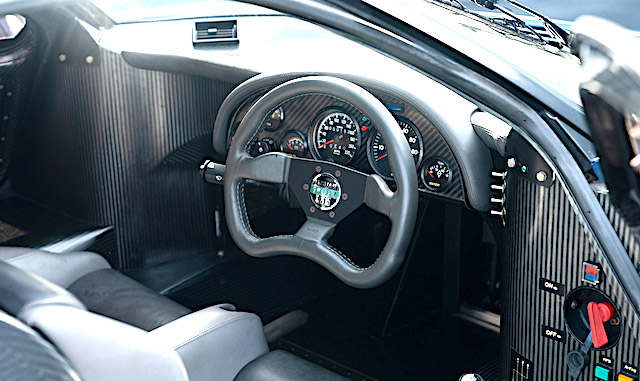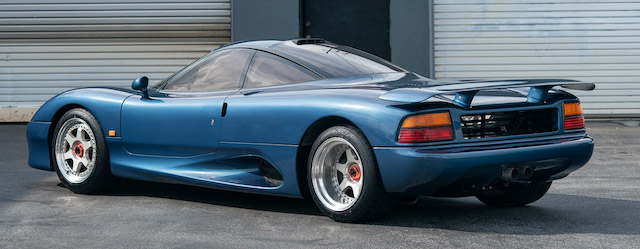
Up for auction in the US next week is a Jaguar XJR-15, one of 27 road legal models based on the XJR-9 racer that won the Le Mans 24-hour event in 1988. Another XJR-15 sold two years ago in the US for $US1,902,500 million ($NZ3,06m).
The auction car recently landed in the US from Asia and will be the headline act at RM Sotheby’s Amelia Island sale on March 4. Bidding is already underway online.

It was sold new to the Asian collector 30-odd years ago and was immediately put into storage. Outside of factory testing, it has never been driven, says Sotheby’s. Under the bonnet of the XJR-15’s all-carbon-fibre body is a detuned version of the same 7-litre V12 used in the XJR-9.
The 1988 win at Le Mans was Jaguar’s sixth since its first success in the D-Type in 1957. Jaguar as a team had pretty much stayed away from Le Mans for many years before fronting up again in 1984 with a sports racing car designed around the V12 engine by the American Group 44 team.

Two cars were entered but both failed to finish. A year later, 1985, a Group 44 Jaguar finished in 13th place, the first time in 22 years that a Jaguar had been logged as a finisher.
In 1986, Jaguar turned to Tom Walkinshaw and his TWR Racing team for a car that could win Le Mans. TWR Racing had dominated the European Touring Car Championship with the Jaguar XJS.
The Jaguar Heritage Trust records that the TWR Racing cars that ran in the 1986 and 1987 Le Mans performed well but succumbed to “failures that were incidental rather that fundamental to the cars’ design or construction”.

In 1988, Jaguar and TWR Racing went to Le Mans in strength with five XJR-9 cars powered by the Jaguar V12 engine in 6-litre and 7-litre displacements. The 6-litre generated 450kW and the 7-litre 560kW.
Two of the cars retired but the remaining three went on to finish first, fourth and sixteenth. The winning Jaguar, car No. 2, driven by Jan Lammers, Johnny Dumfries and Andy Wallace, completed 394 laps and covered a distance of 5330.86km, or 3313.15 miles. In comparison the winning D-type of 1957 covered 4397km (2732 miles).
It was after the win that Walkinshaw reckoned the XJR-9 could be turned into a useable but hardcore street car. JaguarSport, the subsidiary of Jaguar and TWR Racing, hired Lotus Esprit and soon-to-be McLaren F1 designer Peter Stevens to rework the body. As a result the cockpit was higher and wider than that of the race car. Despite the extra width the two seats remain comically close together.

The XJR-15’s running gear was pretty much carried over from the XJR-9 – suspension of wishbones and pushrod spring dampers up front and coil springs in rear; AP Racing steel brakes to bring the 1043kg car to a stop. A five-speed gearbox replaced the racing car’s six-speed manual.
XJR-15 came new with a pair of radio headsets so that occupants could hear each other speak. It wasn’t a gimmick – those who have driven XJR-15 have said the V12 drowned out anything other than a shouted exchange.
The whole car sold new in 1991 for around £500,000 ($NZ1m). A reported 53 were built, 27 for the road and the remainder for the track.
But it didn’t take long for the XJR-15 to fade into relative obscurity. Jaguar’s own XJ220, followed by the McLaren F1, soon stole the spotlight.
